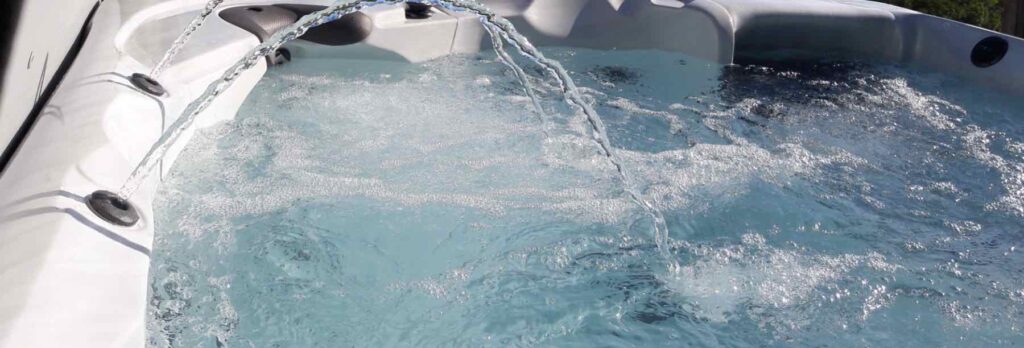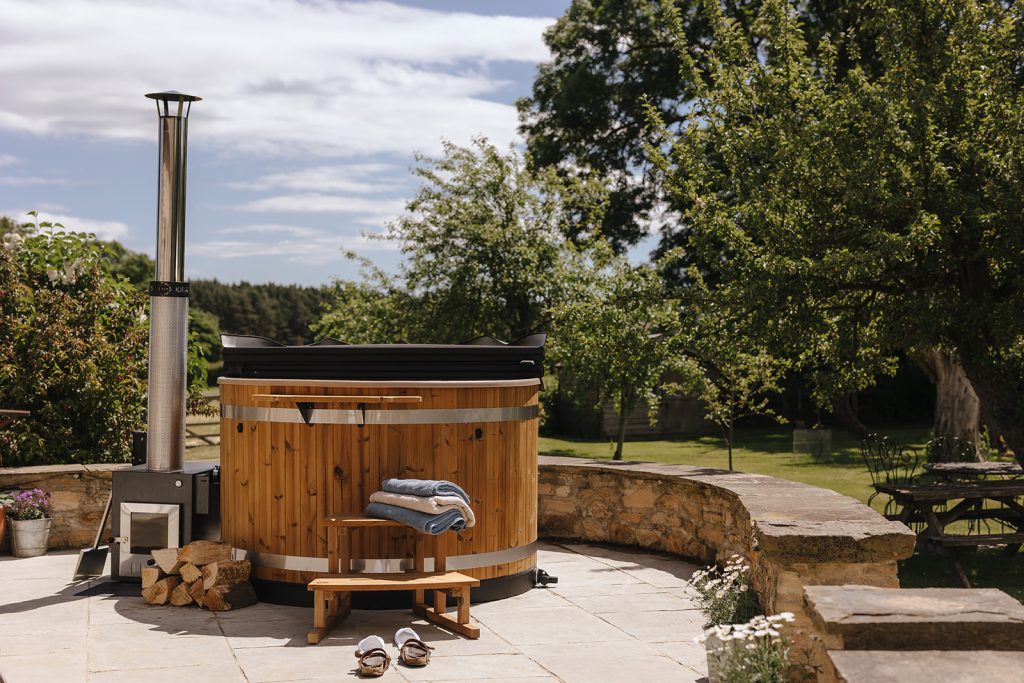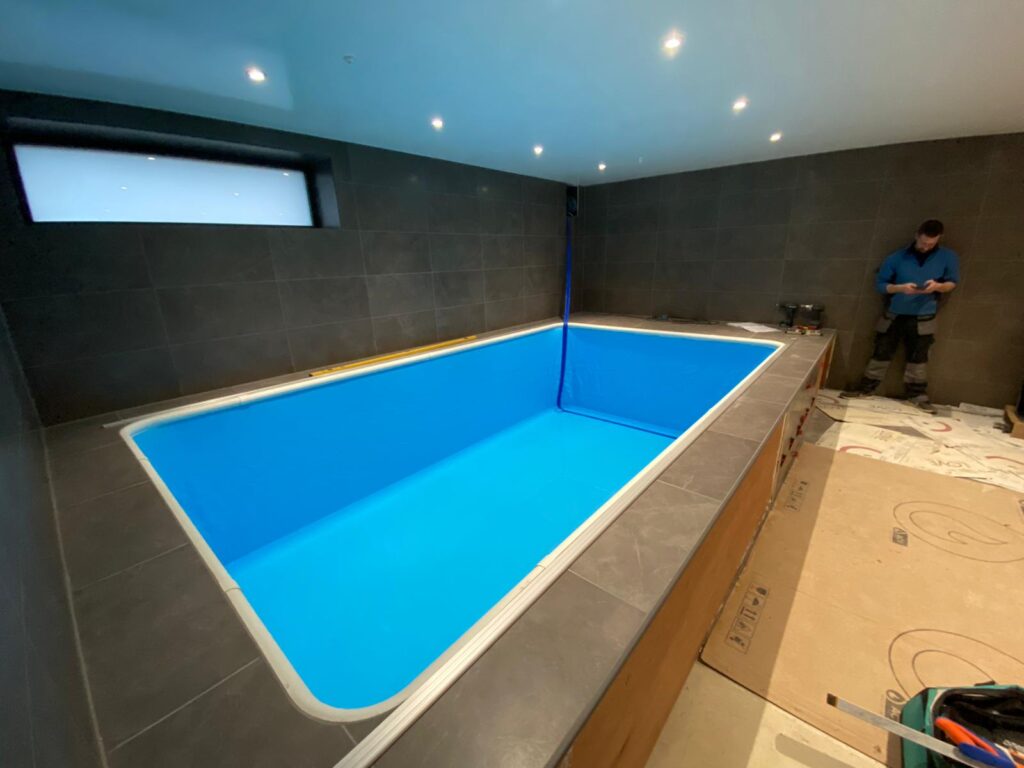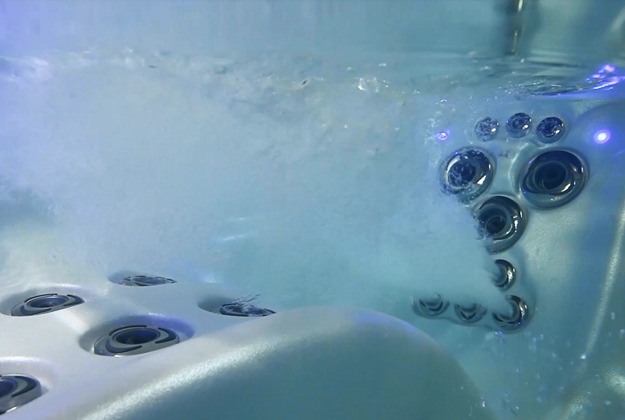Some of the most frequent questions we get asked by potential customers are ‘How do I maintain my hot tub?’ or ‘Is maintaining a hot tub a lot of work?’ These are great questions to ask, as there is some upkeep required to keep your hot tub in pristine condition. The good news is, caring for a hot tub isn’t that challenging, and the rewards far outstrip any effort required.
First things first, the importance of regular care.
- Health and hygiene: keeping the water clean and properly treated is important for healthy bathing.
- Longevity: knowing what you’re doing with the chemicals and keeping your tub clean will help to prolong its lifespan, while regularly cleaning the filters will mean less strain on the pumps.
- Warranty: improper care can lead to a voided warranty, so making sure you treat your hot tub properly can save you headaches.
- Enjoyment: a clean, properly treated hot tub will be a much more enjoyable experience for all.
Prevention is better than cure, and a simple cleaning routine will help to eliminate bacteria growth, or issues such as algae forming, cloudy water or foam.
When you purchase a hot tub from any reputable dealer, they should give you training on how to maintain your hot tub, and be able to recommend and supply chemical packs. But, just so you know what’s required before you take the plunge, let’s look at the overall care a hot tub needs.
Hot tub maintenance checklist
Before we go into detail, here’s a full list of what you’ll need to do and when to keep your hot tub in good working order.
NB: The below is a broad guide – the frequency of the listed checks and treatments will vary according to a variety of factors, such as how often you use your hot tub.
Daily
- Circulate the water (once or twice daily, usually automated)
- Check the pH and sanitiser (before each use)
Fortnightly
- Super-chlorinate (chlorine shock treatment)
Monthly (or more, up to weekly depending on use)
- Wipe down external shell
- Clean filters
- Clarify water
- Check TA
- Check water hardness
- Oxidise (non-chlorine shock treatment)
Monthly-quarterly
- Clean the lines
- Drain, clean and refill your hot tub
Annually
- Renew the filters
- Book a professional servicing
External checks
Have a look over your hot tub every now and then to make sure there’s no damage to the cover, shell or base. It should only take a minute or two, but casting an eye over your spa – especially after bad weather – will help you to spot any potential issues, such as wear and tear on the cover, or any damage.
Cleaning
Use a spa surface cleaning solution and a damp cloth to wipe down the outer shell and cover, and clean around the water line to remove any scum or limescale as and when required.
Water circulation
It’s important to circulate the water for a minimum of 15-20 minutes twice a day, as letting warm water stagnate is a recipe for bacteria, and can lead to issues such as cloudy water, algae growth and a ‘pond’ smell. Circulating the water allows the sanitisers to run through the hot tub and pipes, and also pushes the water through the filters, trapping any debris. If you have a newer hot tub, you should be able to programme this automatically, but if you have an older model, you may need to run it manually.
Sanitising and balancing
There are a few chemicals you’ll need to have on hand to make sure your hot tub water is right for your spa longevity, for health and hygiene, and for your enjoyment. These include:
Sanitisers
- Chlorine or bromine
- Shock treatment (chlorine or non-chlorine)
Balancers
- PH increaser and decreaser
- Alkalinity raiser
- Hardness raiser/anti-scale
You’ll need to regularly check the water to ensure your sanitiser levels, total alkalinity (TA), pH and water hardness fall into the following ranges:
BISHTA recommends the following levels:
- Bromine (if using): 2mg/l-4mg/l Domestic (Business 4-6 mg/l)
- Chlorine (if using): 3mg/l-5mg/l
- TA: 80-120 mg/l
- pH: 7-7.6
- Calcium levels (water hardness) 200mg/l-400mg/l (or ppm).
Sanitisers
Much like a swimming pool, hot tub water needs to be sanitised to control the growth of bacteria and algae.
For hot tubs, the most commonly used sanitisers are chlorine or bromine. There are arguments for and against each, but ultimately it boils down to:
- Chlorine: more commonly used, and so more often supplied, can be slightly cheaper, faster acting, stronger (so you use less of it) and gives clearer water. Chlorine tablets dissolve a lot more quickly than bromine tablets, so can be more suitable for heavy-use spas, such as those in holiday cottages.
- Bromine: longer lasting, so needs to be topped up less frequently, is odourless (unlike chlorine) and is kinder on the skin, so is good for those who are prone to sensitivities. Bromine can sometimes be a little slow to dissolve, but this can be beneficial for domestic users who don’t use their spas so frequently.
These come in tablet or granular form, and your dealer should be able to supply you with the right grade of sanitiser for your hot tub.
If you’re using chlorine, to measure the levels use a chlorine (or 4-way) test strip to make sure you have the required amount per litre. If you’re using bromine, then use a bromine (or 4-way) test strip to make sure it’s in the correct range. If your sanitiser is below the required levels, you’ll need to top it up. Always follow the manufacturer’s instructions and measure the amount carefully.
If you add too much sanitiser, the best way to reduce the levels is to leave your hot tub alone for a few days so it can reduce naturally. Removing the cover will speed up this process, as more water and gases will be able to evaporate. If you need to use the hot tub and can’t afford to wait a few days, then removing some of the water and topping up with fresh water is another solution. Finally, if you need to use it immediately, you can use a reducer to bring the levels back down. Remember to always follow the manufacturer instructions, and retest the water before using.
If you decide to switch sanitisers at any point, make sure the hot tub has been thoroughly drained and cleaned before adding the new chemical.
Total Alkalinity (TA)
It’s important to maintain the right level of TA in your hot tub. If it’s too low or too high, it can cause issues such as corrosion of parts, cloudy water and skin and eye irritation, so you’ll need to test it regularly (at least once a month, according to BISHTA), which you can do using a test strip. If the TA isn’t within the desired range, use an alkalinity increaser to raise it or a PH decreaser to reduce it. This needs to be done before you adjust the pH. Having the correct total alkalinity level means your PH will be more stable. Bear in mind that if your alkalinity is low, it will always pull down your pH level.
pH
Anyone who paid attention in school chemistry class will be familiar with pH as a scale for measuring alkalinity or acidity, with 7 being neutral, anything above that up to 14 being alkaline and anything below that down to zero being acidic. Your hot tub water should have a pH of between 7 and 7.6. Too high, and chlorine will disappear quickly, and you may get calcium and scale build up, and cloudy water; too low and it can start to corrode accessories and metal elements, as well as impact the balance of sanitiser. Too high or low, and it may cause discomfort, such as skin and eye irritation. Many people mistake acidic water for a chlorine allergy, when in actual fact the pH is just too low for comfortable bathing.
In short, keeping pH levels balanced is key to protecting your hot tub, your warranty, your health and your bathing experience.
To check the pH, use a test strip following the manufacturer’s instructions. If the reading comes in at below 7, then it’s too acidic and you’ll need to increase the pH. Above 7.6 and it’s too alkaline, and you’ll need to reduce it. In this case, you’ll need to add a pH increaser if it’s too low and a decreaser if it’s too high.
Water hardness
Hard water refers to water with a higher mineral content (calcium and magnesium, specifically), with water ‘hardness’ varying from region to region (for example, West Wales tends to have ‘soft’ water. Hot tub water needs to be slightly harder, as water that’s too soft can damage the tub and parts. Water that’s too hard, meanwhile can cause build up of limescale that may cause heaters to malfunction.
Use a water hardness test strip to determine the hardness of your hot tub water. If it’s too soft, you’ll need to add a hardness increaser, again following the pack instructions. Using a scale remover on water that’s too hard, meanwhile, will help to tackle any build up of mineral deposits.
Shock treatments
To ensure the sanitisers are working at their best and prevent issues such as cloudy or murky water, you’ll need to do a shock treatment. There are two types of shock treatment – chlorine (used for super-chlorination and oxidisation) and non-chlorine (used for oxidisation only).
Non-chlorine shock (oxidisation)
Using a non-chlorine shock treatment will oxidise the water, with the effect of breaking down particles such as oils, skin cells, lotions and so on, and removing the by-products of chlorine (chloramines) if that’s the sanitiser you’re using. Oxidising doesn’t sanitise the water, but by breaking down organic matter it helps your sanitiser to work more effectively and can prevent issues such as cloudy water, foaming or a strong chlorine aroma. If you have a lot of people using the hot tub, such as for a gathering or party, oxidising before and after usage will help to keep the water clear.
Chlorine shock (Super-chlorination)
Using a chlorine shock treatment is basically adding a high dose of chlorine to the water, and will do all of the above as well as sanitise. This will raise the chlorine levels, so you won’t be able to use the hot tub until they’ve dropped back down to advised levels. This can be done one a fortnightly basis to keep the water sanitised.
Water clarifying/O-Care
No one wants to get into a murky hot tub, and adding a spa clarifier as and when needed will help to keep water clear. As a general rule of thumb, this will be around weekly for heavily used hot tubs (such as holiday cottages), or monthly for more lightly used tubs. Another option, which we would recommend, would be to use a dose of O-Care instead. The reason being, water clarifier removes dirt you cannot see and congeals it into a filterable waste, while O-Care goes above and beyond that, by not allowing it to stick to any surface, resulting in a reduction of biofilm. It’s also soft on the skin, making it suitable for people with sensitive skin, eczema or other skin conditions.
Foam remover
Every now and then you may notice your hot tub is gathering surface foam. If your hot tub has heavy use, this can be caused by residue from the likes of makeup, body lotions, sun cream and so on, from traces on the skin. Other causes include a pH or TA imbalance or even soft water. Testing the water and balancing accordingly will help in such cases, and you can use a foam remover to get rid of any suds if and when they appear. If foam continues, then the only solution is to partly or completely change the water.
Ozone
You may have noticed that some modern hot tubs are fitted with ‘ozonators’. These create ozone, a powerful oxidiser that kills bacteria, which they feed into the hot tub’s pipes. Even if your hot tub has an ozonator, you’ll still need to sanitise using chlorine or bromine, but you may find you need to use less.
Filter cleaning
The secret to clear water is ultimately the right balance of sanitiser and regular cleaning of filters. Your filters work hard to trap debris such as hair and other particles, and failing to clean them regularly will eventually impact how efficiently they work, meaning your sanitiser will have to work harder, and also putting greater stress on the pumps and impacting water flow. To keep them in good condition, you’ll need to clean them monthly (or weekly for holiday cottages/heavily used hot tubs). To do this, remove the filters (making sure the power is switched off first), and soak in a filter cleaning solution according to the manufacturer’s instructions to remove oil and particles. Rinse and leave to dry before reinstalling. It’s recommended to have two sets of filters so you can continue to use your hot tub while you carry out the filter clean.
Draining and refilling
No matter how perfect your cleaning and maintenance routine, you will still need to drain, clean and refill your tub. How frequently you need to do this depends on how heavily it is used and how diligent you are with your cleaning routine, but, as a rule of thumb, it should be done monthly for heavily used hot tubs, and at least every three months.
Before draining your hot tub, you should give the lines a clean using a product such as hot tub flush. This helps to prevent the build up of particles and deposits in the hot tub’s plumbing system. Be sure to follow the pack instructions on your product of choice.
Once you’ve cleaned the pipes, make sure your hot tub is switched off before draining the water, following your hot tub’s instructions. Clean the inside of your tub with a specialist surface cleaner (never use a household cleaner as this could damage it), remove and clean headrests and filters. Refill the hot tub following manufacturer instructions, and turn on once the water has reached the fill line. Once your water has reached the set temperature, you can test, add and balance the chemicals.
Chemical/accessory shopping list
Sanitisers
- Chlorine or bromine
- Shock treatment (chlorine or non-chlorine)
Balancers
- PH increaser and decreaser
- Alkalinity raiser
- Hardness raiser/anti-scale
Cleaners
- Surface cleaner
- Filter cleaner
- Foam remover
- Spa clarifier or O-Care
- Hot tub pipe flush
Additional items you’ll also need include:
- Sanitiser/balancer test strips
- Filters
You can shop all of these products at our showroom or online here.
Safety
- Always properly store your chemicals according to instructions – sealed, in a cool dry place and out of reach of children and animals.
- Follow the manufacturers’ instructions on all chemicals.
- Speak to your dealer if you’re unsure.
For information or advice on buying a hot tub or hot tub chemicals, or to book a showroom visit, contact us online or give us a call on 01974 241 642. Our friendly team will be happy to help.




